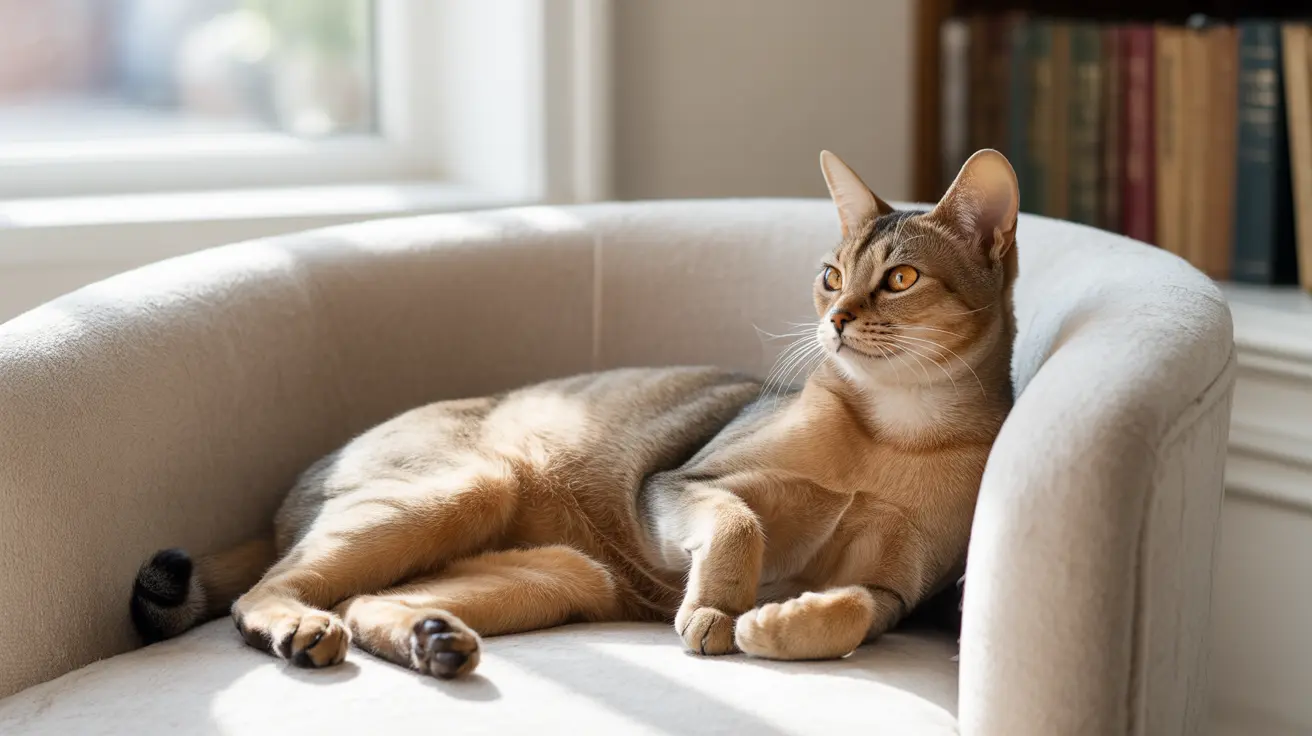Tabby cats are among the most common and beloved felines worldwide, featuring distinctive coat patterns that range from bold stripes to intricate swirls. Whether you're a current cat owner or considering adopting a new feline friend, understanding the various types of tabby cats can help you better appreciate these beautiful creatures and their unique characteristics.
In this comprehensive guide, we'll explore the fascinating world of tabby cats, including their distinctive patterns, genetic makeup, and special features that make them truly remarkable companions.
The Four Main Types of Tabby Patterns
Classic (Blotched) Tabby
The classic tabby pattern features bold, swirling designs that create a distinctive bullseye pattern on the cat's sides. These cats often display a butterfly-shaped marking across their shoulders, and each cat's pattern is as unique as a fingerprint. This pattern is particularly common in American Shorthairs and is controlled by a recessive gene.
Mackerel Tabby
Often called the "tiger cat," the mackerel tabby displays narrow, parallel stripes running down its sides from a solid stripe along the spine. These vertical stripes can be continuous or broken, creating a fish skeleton-like appearance that gives this pattern its name. This is one of the most common tabby patterns seen in domestic cats.
Spotted Tabby
Spotted tabbies showcase distinct spots across their bodies, which can be round, oval, or appear as broken stripes. This pattern is prominently featured in breeds like the Bengal and Ocicat. The size and shape of spots can vary significantly, creating unique appearances for each cat.
Ticked Tabby
The ticked tabby pattern is unique in that it doesn't show the typical stripes or spots on the body. Instead, each hair is banded with different colors, creating a salt-and-pepper appearance. This pattern is most famously seen in Abyssinian cats, though it can appear in other breeds as well.
The Genetics Behind Tabby Patterns
Every domestic cat carries the tabby gene, though it may not always be visible. The appearance of tabby patterns is controlled by several genetic factors, including the agouti gene and various pattern-determining genes. Even solid-colored cats may show faint tabby markings in certain lighting conditions.
Common Tabby Features and Markings
All tabby cats share some distinctive features, regardless of their specific pattern:
- The famous "M" marking on the forehead
- Lighter coloring around the eyes and chin
- Striped legs and tail
- Distinctive eye liner-like markings
- Multiple color variations including brown, gray, and orange
Tabby Colors and Combinations
Tabby patterns can appear in various colors, including:
- Brown (the most common)
- Gray/Blue
- Orange/Ginger
- Silver
- Cream
- Combinations like torbie (tortoiseshell + tabby)
Frequently Asked Questions
What are the main types of tabby cat patterns, and how do they differ?
The four main tabby patterns are classic (swirled), mackerel (striped), spotted, and ticked. Classic tabbies have bullseye patterns, mackerel tabbies show straight stripes, spotted tabbies have distinct spots, and ticked tabbies display agouti hairs without obvious stripes or spots.
How do genetics influence the appearance of tabby patterns in cats?
Tabby patterns are determined by multiple genes, including the agouti gene and pattern-specific genes. These genetic factors control whether a cat will display classic, mackerel, spotted, or ticked patterns, as well as the intensity and clarity of the markings.
Can any cat develop a tabby pattern, or is it breed-specific?
All domestic cats carry tabby genes, though the pattern may not always be visible. Tabby patterns can appear in any breed and are not limited to specific breeds, though some breeds are known for particular tabby patterns.
How do I identify and distinguish between classic, mackerel, and spotted tabby cats?
Look for the distinctive pattern characteristics: classic tabbies have swirling bullseye patterns, mackerel tabbies show straight vertical stripes, and spotted tabbies display distinct spots or broken stripes across their bodies.
What health considerations should I be aware of when owning a tabby cat?
Tabby cats don't have any pattern-specific health concerns. Their health needs are the same as any other cat and depend more on breed, age, and individual factors rather than their coat pattern.
Whether you're drawn to the bold swirls of a classic tabby or the striking spots of a spotted tabby, these cats make wonderful companions. Their diverse patterns and friendly personalities have made them beloved pets worldwide, and understanding their unique characteristics can help you better appreciate these remarkable felines.






